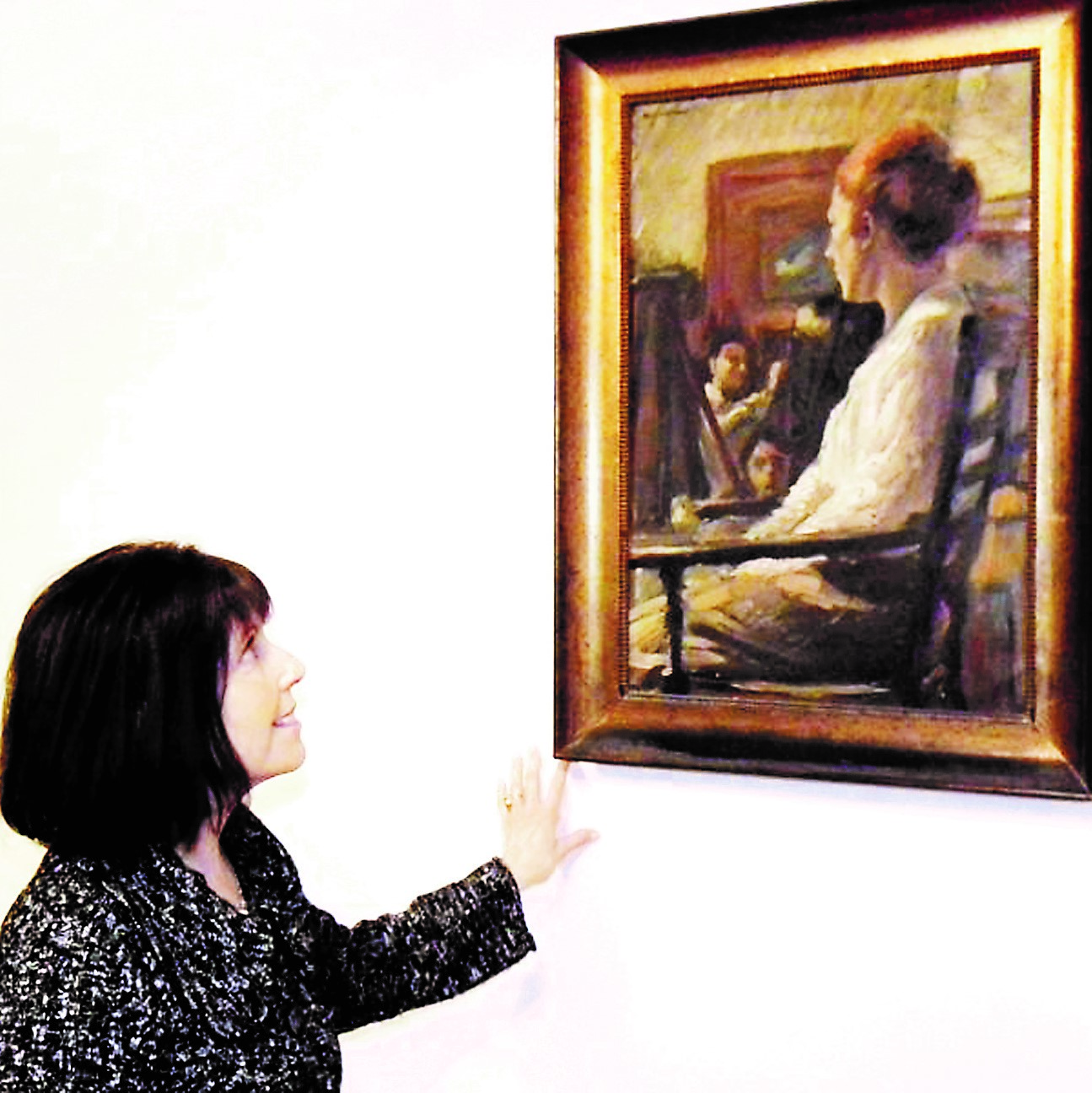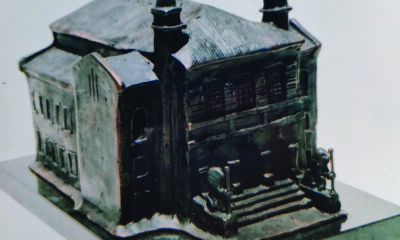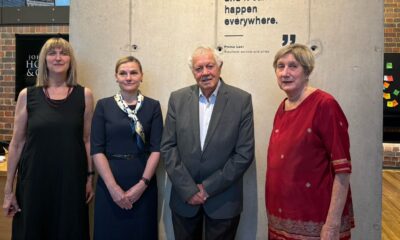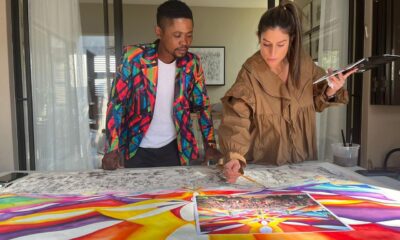
Featured Item

On a mission to find father’s artworks looted by Nazis
Miriam Friedman Morris grew up in awe of the way in which her father, David Friedman, put brush to canvas. It has motivated the artist’s daughter to pay tribute to her father in a singular way: by tracking down his early paintings looted by the Nazis.
“Art shaped my life,” Friedman told the SA Jewish Report this week. “My father fought antisemitism and racial hatred by showing his Holocaust art to the world. After my father’s death, I grasped the enormity of his legacy and the responsibility that came with it. I had to rescue him from obscurity.”
Born in Austria in 1893, David Friedmann (who later changed his surname to Friedman) was a passionate artist whose promising pre-war career was cut short when the Nazis came to power. Renowned for his life-inspired portraits, he fled to Prague with his first wife, Mathilde, and daughter, Mirjam Helene, and relied on his artistic skills to survive.
Tragically, he and his family were transported to death camps (his wife and daughter perishing at Auschwitz), his artwork was looted, and his rise to artistic renown abruptly ended.
Although Friedman went on to achieve professional success as a post-war artist in Israel and the United States (starting a second family along the way), he resigned himself to the fact that his early works were lost. His daughter has made it her mission to track them down.
Says Friedman Morris, “Since childhood, I watched my father paint with intensity and passion. I was intrigued about his pre-war life and the fate of his Nazi-looted art in Berlin and in Prague. He had little to show from a collection that numbered more than 2 000 paintings, drawings, lithographs, and etchings.
“I felt sad that there was little to show for his fame. It fuelled my passion to find his works, and rescue him from oblivion.”
Friedman Morris began her search after her father’s death in 1980 by writing to German archives and institutions, but received little new information. However, on her first research trip in 1994, she found artwork everywhere she went, including Poland, Czechia, Germany, Israel, the United States and other countries all over the world.
Says Friedman Morris: “My father lost his works three times: before, during, and after World War II. My pursuit evolved into a simultaneous search for art he created prewar, as a refugee in Prague, during his incarceration in the Łódź Ghetto, the Auschwitz subcamp Gleiwitz I, and works lost when fleeing Stalinist Czechoslovakia to Israel.”
She adds: “Finding the portraits was a catalyst to recover the career of a leading press artist the Nazi regime erased from his profession. Sketch by sketch, David Friedman’s telling signatures identified his work and returned him to fame.”
Friedman enjoyed a successful pre-war career in the 1920’s in Berlin as a portrait and landscape painter, a graphics artist and a leading press artist until Adolf Hitler’s ban in 1933. Tragically, his career was cut short before he could become renowned internationally, forced to leave his early accomplishments behind him when the Nazis took over.
Says Friedman Morris: “Stripped of the opportunity to become world-renowned, careers of hundreds of Jewish artists were cut short and their fate changed forever because of the German Reich. My father did not have the opportunity to fulfill his rise to be a ‘world famous’ artist.”
“Finding the pieces of my father’s lost art legacy and recovering his career is gratifying and a bit of justice.”
Friedman’s endeavours enable her to better connect with a father with whom she shared a special bond, she says.
“I was named after my father’s murdered daughter, Mirjam Helene,” she says. “My father didn’t sit down with me to discuss his past; it was too painful. I met his first family through photos and learned [about] his experience from his artwork. Over time, snippets of information slipped out, and I could read articles about my father in newspapers, which led to conversations.
“However, I learned even more about my father by finding his artwork.”
Her quest has led to a worldwide revival of an artist obscured by the Nazi regime. Friedman Morris has continued her father’s mission to show his art to the world, facilitating exhibitions, lecturing, writing, and dedicating herself to the preservation of his art legacy.
“My father was an eyewitness to Nazi crimes perpetrated against the Jews,” she says. “He fought antisemitism and racial hatred by showing his art to the world. His art wouldn’t be silent. Each and every artwork tells a story, documents an event, or captures the essence of a moment lost in time.
“My role is to tell the story of a father and daughter’s bond through his art to encourage understanding of the Holocaust and lost cultural history. My father’s work appeals to the world community as a testament against hate and intolerance in all its many forms. For those dedicated to learning and teaching the Holocaust and keeping memories alive, his artworks are priceless, invaluable, and irreplaceable.”
Friedman Morris’s quest has taken her from Israel to the United Kingdom, from private collections to galleries worldwide. To date, she has found about 50 pieces, including lithographs, etchings, and paintings. Not all of them are in her possession, however, as several pieces have been donated to the New Synagogue Berlin Centrum Judaicum and the Leo Baeck Institute in New York and Berlin.
Fascinatingly, Friedman has even followed a lead to South Africa, seeking artworks that may have arrived on our shores with immigrants fleeing the Nazi terror.
“A few months ago, I received an email from a woman in Denmark who wrote that her mother had inherited three paintings from a Hermann Philippsthal who had escaped Nazi Germany and had lived in Sweden and Denmark,” she recalls. “The paintings were hanging on her mother’s walls for decades, and suddenly she was curious about them. Searching the internet for David Friedman, she found me, and a half an hour later, we were in contact.
“I researched the genealogy of the Philippsthal family, and discovered there were eight siblings, and I recalled my father had corresponded with Paul Philippsthal in Johannesburg. I discovered that at least three of them had collected my father’s art.”
Friedman says that Paul Philippsthal was born in 1898 in Neustadt, Germany, now Poland. “He was a sculptor, and I believe his wife’s name was Elizabeth,” she says. “Their address in 1952 was P.O.B. 6563 Johannesburg. The last note is from 1958, but my father’s correspondence is largely lost.”
Because thousands of refugees fled Nazi Germany and some managed to take along artwork, Friedman hopes that everyone looks on the walls of their homes for her father’s lost artwork.
“I would be grateful for leads to any pieces by my father,” she says. “My aim is to create a catalogue of his works, evidence of his brilliant career the Nazis couldn’t destroy.
“My father would be thrilled to know his work has survived. I appeal to the readers to join my search and preserve the legacy of this remarkable artist.”
For more about David Friedmann and to provide information you may have about existing works, please visit: www.davidfriedmann.org or the “David Friedmann—Artist As Witness” Facebook page.










